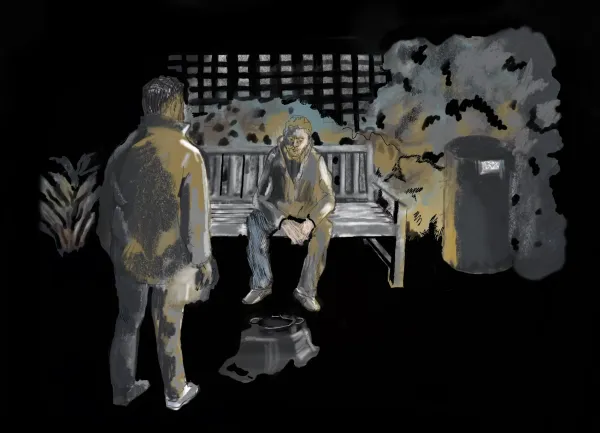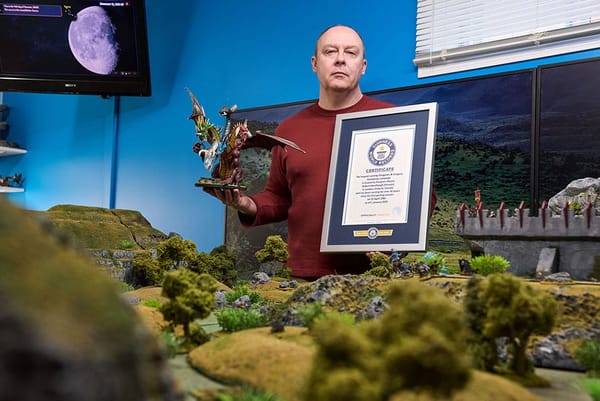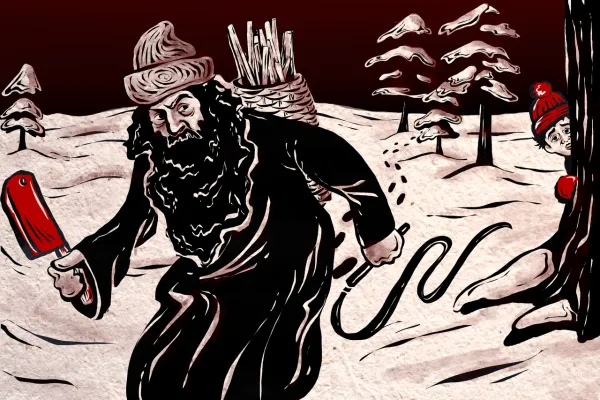He was fined for driving a pink Barbie Jeep while intoxicated

From Global News: "A Prince George, B.C., man received a 90-day driving prohibition after he was spotted by police driving an unusual vehicle on a street on Friday morning. On Sept. 5, an officer was on patrol in the area of 15th Avenue and Nicholson Street at 9 a.m. when they spotted a man driving a pink toy car down the street. The toy appeared to be a Power Wheels Barbie Jeep Wrangler. Kasper Lincoln told Global News he’d borrowed the toy, which belongs to his roommate’s daughter, to go get a Slurpee. During the stop, the police officer believed the driver to be impaired and found that the driver had a suspended licence. The driver was arrested for prohibited driving and he then provided two breath samples that were both over the legal limit and was subsequently issued a 90-day driving prohibition, police said. Lincoln said he hadn’t had anything to drink that morning and had just woken up. He added that the Barbie Jeep was not impounded and had been returned to his roommate’s daughter."
How the math of shuffling cards almost brought down an online poker empire

From Scientific American: "If you’ve ever shuffled a deck of playing cards, you’ve most likely created a unique deck. That is, you’re probably the only person who has ever arranged the cards in precisely that order. Although this claim sounds incredible, it’s a great illustration of how quickly large numbers can creep into everyday situations—with occasionally challenging consequences, as the developers of an online poker game painfully discovered in the late 1990s. The mathematics of card shuffling is quite easy to explain. To calculate how many arrangements 52 playing cards can have, you must go through all the possible shuffles. A standard deck can be arranged in 52 × 51 × 50 × ... × 2 × 1 = 52! different ways. If you do the multiplication and round the answer, you will get a number with 67 zeros. That’s more than a quadrillion times as many ways to arrange these cards as there are atoms on Earth."
The Great Pigeon Heist: How Belgian racing pigeons became the target of organized crime

From the Washington Post: "The Chinese businessmen arrived in the Belgian countryside driving luxury sports cars, ferrying translators and bags of cash. When they parked in front of Tom Van Gaver’s small brick farmhouse, he knew why they had crossed the world to see him.They wanted his pigeons.Van Gaver, 38, had been breeding racing pigeons since he was 5. It was a hobby he inherited from his father who inherited it from his great grandfather. The pigeons could find their way home from hundreds of miles away, flying at 50 miles per hour. Van Gaver’s birds, which he entered in national races, were among the best in Belgium. Around 2019, wealthy Chinese industrialists started spending millions on pigeons. That year, a pigeon named Armando sold for $1.4 million at an auction. In 2020, another bird named New Kim sold for $1.9 million. Pigeon races in major Chinese cities became opulent symbols of China’s economic boom, with purses over $100 million — exceeding most of the world’s major sports."
Hi everyone! Mathew Ingram here. I am able to continue writing this newsletter in part because of your financial help and support, which you can do either through my Patreon or by upgrading your subscription to a monthly contribution. I enjoy gathering all of these links and sharing them with you, but it does take time, and your support makes it possible for me to do that. I also write a weekly newsletter of technology analysis called The Torment Nexus.
She vanished on a Colorado mountain and 19 years later a dream helped them find her

From 5280: "Erika German often gets a weird feeling before she finds a body in the wilderness: a prickling sensation under her skin followed by a surge of adrenaline. It was September 13, 2024, and the Vail Mountain Rescue Group volunteer had been out all day hiking with a partner, Zach Smith, on Mt. of the Holy Cross, looking for clues to an unsolved case that had mystified searchers for years. The sun was sinking low in the sky, and they were almost ready to head home, carefully picking their way through the steep terrain at the mountain’s base. Tired from the day’s long, tricky trek, German thought this latest excursion would be just the latest in a series of fruitless searches for the missing hiker. The hunt for Michelle Vanek became the largest search for a missing hiker in Colorado history. The U.S. Forest Service dispatched a plane. Rescuers brought helicopters, horses, and dogs. The mountain crawled with as many as 850 searchers."
Dying patients often have a period of "terminal lucidity" but scientists don't know why

From Wikipedia: "Terminal lucidity is an unexpected return of consciousness, mental clarity, or memory shortly before death in individuals with severe psychiatric or neurological disorders. It has been reported by physicians since the 19th century. Terminal lucidity is a narrower term than the phenomenon paradoxical lucidity where return of mental clarity can occur anytime (not just before death). Terminal lucidity is a poorly understood phenomenon in the context of medical and psychological research, and there is no consensus on what the underlying mechanisms are. It can occur even in cases of severe, irreversible damage or degeneration to the brain. According to the biologist Michael Nahm, the phenomenon has been noted in individuals with diseases which cause progressive cognitive impairment, such as Alzheimer's disease, but also schizophrenia, tumors, strokes, meningitis, and Parkinson's disease."
This 84-year-old grandma bakes over 300 pastries every night

Acknowledgements: I find a lot of these links myself, but I also get some from other newsletters that I rely on as "serendipity engines," such as The Morning News from Rosecrans Baldwin and Andrew Womack, Jodi Ettenberg's Curious About Everything, Dan Lewis's Now I Know, Robert Cottrell and Caroline Crampton's The Browser, Clive Thompson's Linkfest, Noah Brier and Colin Nagy's Why Is This Interesting, Maria Popova's The Marginalian, Sheehan Quirke AKA The Cultural Tutor, the Smithsonian magazine, and JSTOR Daily. If you come across something interesting that you think should be included here, please feel free to email me at mathew @ mathewingram dot com



